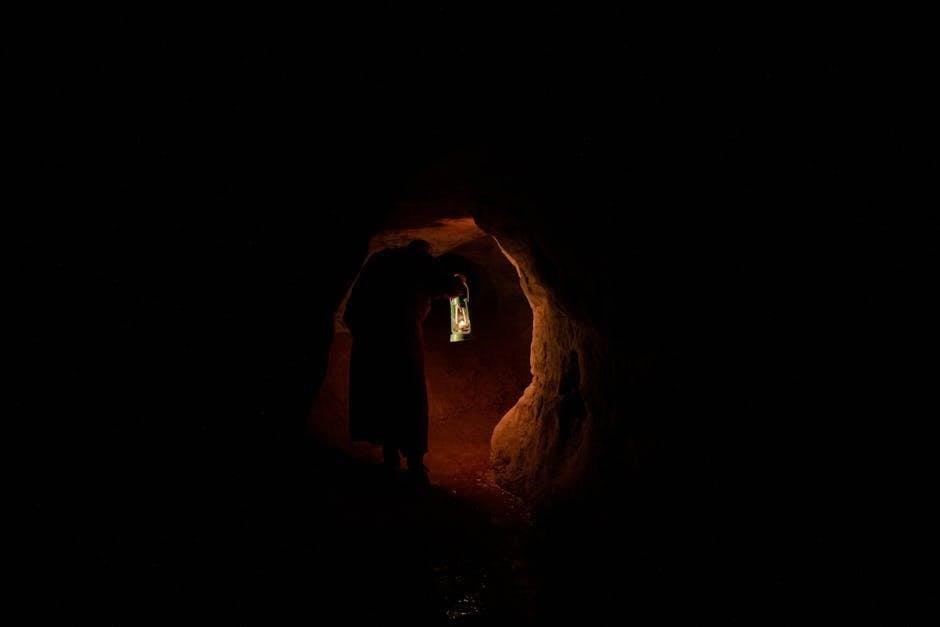NFPA 704 Hazard Diamond Guide
The NFPA 704 Hazard Diamond, often called the Fire Diamond or Safety Square, is a standardized system; It helps identify material hazards and their severity. This quickly informs emergency responders.
Overview of the NFPA 704 System
The NFPA 704 system, represented by the Hazard Diamond, is a crucial tool for communicating hazards associated with materials; Specifically, it is crucial for emergency response. This visual aid provides a rapid, easily understood method for identifying the risks posed by a substance. It is especially helpful under fire or spill conditions. The system’s design focuses on short-term, acute exposure risks. It is vital for firefighters and other first responders. They can quickly assess the situation and make informed decisions regarding safety measures. The diamond shape is divided into four color-coded sections, each representing a different type of hazard. Numbers within these sections denote the severity level. The system aims to prevent injuries and protect property. It is a cornerstone of safety protocols across various industries and emergency services. It provides standardized hazard information. Thus, it promotes effective risk management and response strategies in hazardous material incidents. The NFPA developed and maintains the system.

Purpose of the NFPA Diamond
The NFPA Diamond serves as a rapid visual alert. It quickly identifies the health, flammability, reactivity, and specific hazards of materials. This is crucial for emergency responders in dangerous situations.
Alerting Emergency Responders
The primary function of the NFPA 704 Hazard Diamond is to provide immediate and critical information to emergency responders. This includes firefighters, hazmat teams, and other personnel who arrive at the scene of an incident involving hazardous materials. The diamond’s color-coded quadrants and numerical ratings offer a concise overview of the potential dangers present, enabling responders to quickly assess the risks and make informed decisions about how to proceed safely and effectively. This rapid assessment is crucial for minimizing exposure, containing spills, and preventing further escalation of the situation. The diamond’s consistent format ensures that responders, regardless of their location or organization, can readily understand the hazards and take appropriate precautions.
Assessing Hazards Quickly
The NFPA 704 Hazard Diamond is designed for rapid hazard assessment, allowing emergency responders to quickly understand the risks associated with a particular material. In situations where time is of the essence, the diamond provides a visual representation of the health, flammability, reactivity, and specific hazards present. This quick assessment enables responders to make informed decisions regarding personal protective equipment, evacuation procedures, and the appropriate methods for controlling the incident. The standardized format of the diamond ensures that the information is readily accessible and easily understood, regardless of the responder’s background or experience. By providing a clear and concise overview of the hazards, the NFPA 704 system significantly enhances the safety and effectiveness of emergency response efforts.

Understanding the Diamond’s Components
The NFPA 704 Hazard Diamond is divided into four color-coded quadrants. Each section represents a specific hazard type. These colors offer quick visual cues to the risks associated with a material.
Color-Coded Quadrants
The NFPA 704 Diamond employs a distinct color scheme. This is designed for immediate hazard recognition. The blue quadrant, positioned on the left, signifies health hazards. It indicates the potential dangers of exposure to the material. The red quadrant, located at the top, represents flammability hazards. It shows how easily the material can ignite and burn. The yellow quadrant, found on the right, denotes reactivity hazards. This reflects the material’s stability and potential for explosion or violent reaction.
Finally, the white quadrant at the bottom is for specific hazards. It uses symbols to communicate special risks, like radioactivity or unusual reactivity with water. The combination of these color-coded quadrants provides a comprehensive overview. It allows emergency responders to quickly assess the risks involved. This enables informed decision-making in hazardous situations. These hazards aid personnel in ensuring safety protocols.

Explanation of Hazard Ratings
Each colored quadrant contains a numerical rating from 0 to 4. Zero indicates minimal hazard, while four signifies severe risk. These ratings quickly communicate the level of danger associated with each category to emergency personnel.
Health Hazard (Blue)
The blue quadrant, located on the left side of the NFPA 704 diamond, specifically addresses health hazards. It indicates the potential risks associated with exposure to a material, focusing on short-term, acute effects. A rating of 4 signifies that brief exposure could cause death or major injury, even with prompt medical treatment.
A rating of 3 implies that serious or permanent injury could result from short exposure. A 2 indicates that temporary incapacitation or residual injury might occur. A 1 suggests only minor irritation or injury. Finally, a 0 means that no hazard exists. This system allows responders to prioritize safety measures.
Understanding the blue quadrant is crucial for protecting emergency personnel and others who might come into contact with hazardous materials. It enables quick assessment and informed decision-making in emergency situations, leading to safer outcomes and reduced health consequences. The blue rating helps determine necessary protective equipment.
Flammability Hazard (Red)
The red quadrant, positioned at the top of the NFPA 704 diamond, signifies a material’s flammability hazard. This indicates how easily a substance will ignite and burn. A rating of 4 denotes extremely flammable materials that quickly vaporize and readily burn at normal temperatures. Examples include highly volatile liquids and gases.
A rating of 3 signifies materials that can be ignited under almost all ambient temperature conditions. A 2 indicates materials that must be moderately heated or exposed to relatively high ambient temperatures before ignition can occur. A 1 represents materials that require considerable preheating before ignition and combustion can occur. A 0 means that the material will not burn.
Emergency responders use this information to determine appropriate firefighting strategies and the level of protective gear needed. Understanding the flammability hazard is crucial for preventing explosions and controlling fires effectively. Proper assessment minimizes risks and ensures the safety of personnel and the surrounding environment. The red rating guides safe handling.
Reactivity Hazard (Yellow)
The yellow quadrant, located on the right side of the NFPA 704 diamond, represents the reactivity or instability hazard of a material. This indicates the potential for a substance to undergo violent chemical reactions, such as explosions or detonations, under certain conditions. A rating of 4 signifies materials that may detonate or explode at normal temperatures and pressures.
A rating of 3 indicates materials that may detonate or explode with strong initiating sources or when heated under confinement. A 2 represents materials that readily undergo violent chemical change at elevated temperatures and pressures, or which react violently with water. A 1 means that the material is normally stable, but can become unstable at elevated temperatures and pressures. A 0 indicates that the material is normally stable, even under fire exposure.
Emergency responders rely on this information to assess the potential for explosions or rapid polymerization. They also determine safe distances and necessary precautions. The yellow rating helps them manage the situation effectively. Understanding reactivity is paramount for ensuring responder safety and preventing catastrophic events.
Specific Hazard (White)
The white quadrant at the bottom of the NFPA 704 diamond provides information about specific hazards associated with a material that are not covered by the other three categories. This section uses symbols to convey specific dangers. Common symbols include “W“, indicating reactivity with water, and “OX”, signifying an oxidizer, which can intensify a fire.
Other symbols may include “SA” for simple asphyxiants, which displace oxygen in the air, and “COR” for corrosive materials. These symbols alert emergency responders to unique hazards that require specialized handling procedures. For example, materials reactive with water can create explosive conditions if water is used to extinguish a fire.
Oxidizers can accelerate combustion, making fires more intense and difficult to control. Understanding these specific hazards is crucial for selecting the correct extinguishing agents and protective equipment. The white quadrant ensures a comprehensive hazard assessment, enhancing the safety and effectiveness of emergency response efforts. It addresses dangers not captured elsewhere.

NFPA Diamond Ratings Meaning
The NFPA 704 diamond uses a numerical rating system, ranging from 0 to 4, to indicate the severity of each hazard. A rating of 0 signifies minimal hazard, meaning the material poses little to no risk under normal conditions. A rating of 1 indicates a slight hazard, where the material may cause irritation or require some precautions;
A rating of 2 represents a moderate hazard, suggesting that the material could cause temporary incapacitation or injury. A rating of 3 signifies a serious hazard, indicating that the material could cause serious or permanent injury. Finally, a rating of 4 denotes a severe hazard, meaning the material is life-threatening and could cause death or major injury.
These ratings apply to the health, flammability, and reactivity quadrants, providing a quick assessment of the risks involved. Emergency responders use these ratings to determine the appropriate level of protective gear and response strategies needed to safely handle the material, minimizing potential harm.

